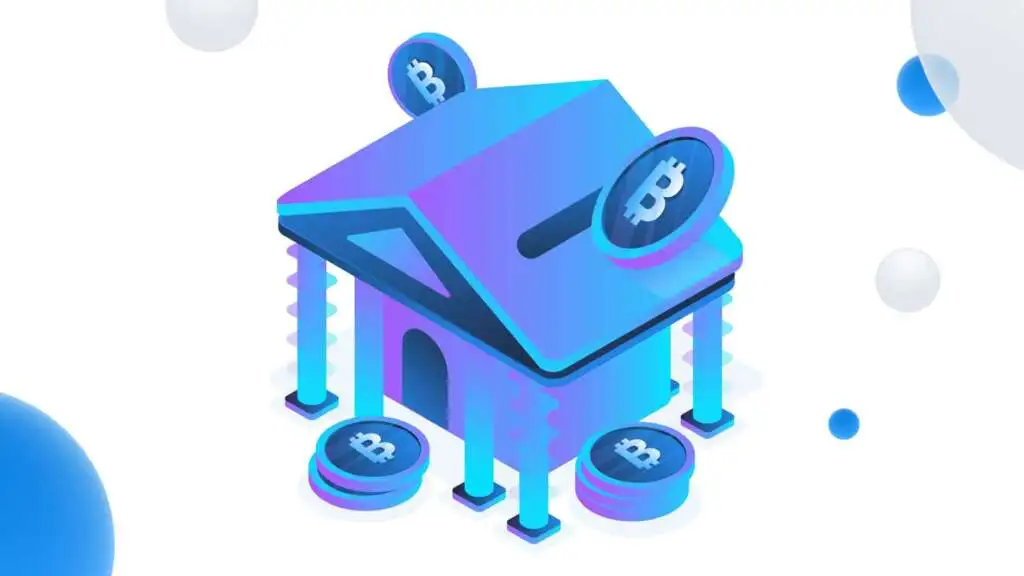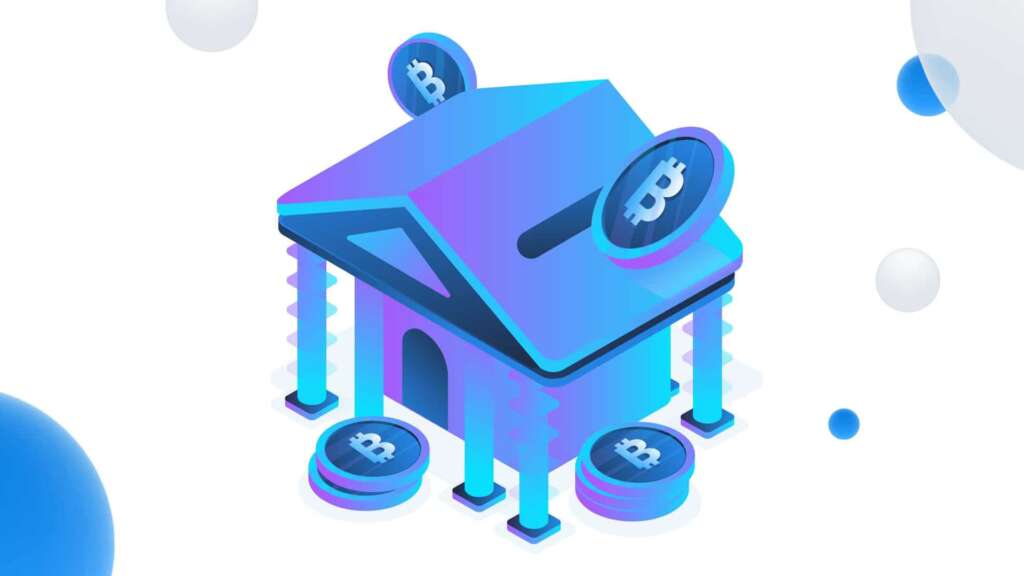
As a financial model used all over the world, CeFi plays an important role in the development of the crypto industry. Compared to DeFi, the user-friendly nature of CeFi makes it an obvious choice for many users, especially newcomers. Preface will go over everything you need to know about CeFi in this article.
Definition of CeFi
CeFi is short for “Centralized Finance”, which is very similar yet different to the concept of “DeFi” (Decentralized Finance)”.
As its name suggests, CeFi refers to a series of crypto trading activities that have to be done through a centralized medium, which involves loan servicing, buying insurance, earning interests and more. During the trading progress, the third party platform will first collect the digital assets from the buyer’s wallet. Upon verifying the transaction, the platform will send the payment to the seller’s account. In other words, CeFi users will not complete transactions through a peer-to-peer (P2P) network.
Both DeFi and traditional financial services offer certain advantages – the former allows investors to earn higher returns, whereas the latter allows fast and reliable trading. And according to Blockchain Experts, CeFi is by far one of the few revolutionary technologies that are able to merge these unconnected edges into a single system. Via CeFi, not only can users earn interests by stashing their cryptocurrency in a savings or checking account, but they can also invest in funds, apply for loan and sign up for a debit card, opening up possibilities for cryptocurrency to evolve from an obscure fad to a much more mainstream form of investment and finance.
CeFi VS DeFi: What are the differences?
The major difference between CeFi and DeFi is the ground of trust.
In CeFi, users have to trust the centralized third parties as well as their staff members with their personal information and crypto assets. From setting up accounts to executing trade orders, all activities must be subject to certain requirements, restrictions and guidelines defined by the centralized organizations.
Meanwhile, DeFi users only need to have faith in the decentralized technology behind the exchange platform, and the entire trading system is community-governed, open, and functions without third-party permissions or interference.
Given that CeFi is very much alike to traditional backing service, coupled with the ease of use, it thus acquires higher market share and larger user base when compared to DeFi.
Reference: LeewayHertz, FinanceMagnets, SolunTech
Advantages of CeFi
1. KYC
CeFi requires users to undergo Know Your Customer (KYC) process, meaning new customer have to confirm their identities and other credentials before starting to use the services offered by centralized crypto exchange platforms. Similar to traditional banking, centralized financial organizations may share clients’ personal information with the government due to several obligations, for example, to perform duties as a financial institution under the Automatic Exchange of Financial Account Information (AEOI) standard.
2. Fiat-to-Crypto
The fiat-to-crypto service of CeFi is more flexible than what DeFi offers. Thanks to centralized finance, investors and investment companies are able to convert a massive amount of fiat money into crypto assets, which has contributed significant liquidity to the commonly used currency pair. It’s no exaggeration to say that CeFi is the prime motivating force of today’s growing crypto and blockchain industries.
Apart from creating a convenient and smooth crypto exchange experience, CeFi also supports a wide variety of coins or pairs, providing an innovative solution that suits every investor’s needs.
3. Custodian
Built on a centralized system with a sealed source, any trading activity must apply for the third parties’ permission to perform. Therefore, CeFi ensures security and offers utmost protection to its users by overseeing every single trade and handling their assets. It is also effective at preventing illegal and suspicious trading such as scams and fraud from happening.
4. Liquidity
CeFi has unrivalled liquidity in options trading. For example, many popular trading pairs can have approximately over millions invested in them, meaning investors can buy and sell whenever they want, which are very favorable to day traders and swing traders.
Some CeFi exchange platforms even offer a leverage ratio of 100x to 300x. Confident investors can therefore use leverage primarily to amplify profits and potentially enhance their gains.
5. Cross-chain Service
One biggest benefit of CeFi is that it can support cross-chain service, for example, from LTC to BTC and ETH to XRP. Although there are a variety of consensus mechanisms in different blockchain ecosystems, CeFi is still able to exchange data, cryptos and digital financial assets across independent blockchains.
Due to the latency and complexity of performing cross-chain swaps, the majority of DeFi is not capable of connecting every chain seamlessly. However, with the custody of funds from multiple chains, CeFi can easily overcome the aforementioned issue, providing an easier and more convenient option for whoever is interested in buying niche coins.
Disadvantages of DeFi
1. High Fees to Middleman
Since CeFi involves a middleman to oversee users’ crypto transactions and activity, the handling fees are normally more expensive than DeFi’s.
2. Mandatory Verification Processes
CeFi requires users to run rigorous identity verification checks, this is undoubtedly a huge challenge for investors who prefer to trade anonymously.
3. Lower Flexibility
The biggest drawback of CeFi is that investors have little to no control over their personal assets. Since the investors have put their money in a centralized platform and allowed the related parties to manage on their behalf, it is possible for the organizations to suspend cash withdrawals in order to safeguard their own interests. As a matter of fact, it is a common practice of traditional banks as they might restrict or hinder people from withdrawing money in times of financial crisis.
Reference: BeinCrypto
CeFi Use Cases in Real Life
Although CeFi seems to be irrelevant to the “decentralized” cryptocurrency, it has quite a broad sphere of application in real life.
CeFi Use Case #1: Coinbase
Coinbase is a centralized online platform for buying, selling, transferring, and storing digital currency. It currently supports over 100 currencies for trading, and the number grows continuously.
CeFi Use Case #2: BlockFi
Similar to traditional banks, BlockFi provides a complete, all-in-one financial services platform, offering loans and financial advice.
CeFi Use Case #3: Ledn
Ledn is a cryptocurrency platform with a diverse range of financial services catering to the crypto-economy.
Reference: Blockchain Council
Risks of CeFi
CeFi is an independent centralized organization. Under most circumstances, these kinds of businesses often look out for their best interests when a crisis occurs, and their decisions have the potential to cause great damage to investors.
For instance, the crypto market has been so volatile recently, both Bitcoin and Ethereum have recorded a significant drop in price. In such a bear market, many CeFi exchange platforms were facing severe liquidity pressure, which consequently led to a chain of contagious risks.
Because of extreme market conditions, cryptocurrency lending platforms Celsius Network paused withdrawals, swaps and transfers between accounts without advance notice. Unfortunately, once a platform freezes customer assets, it’s typically all over. Celsius later filed for bankruptcy, meaning its investors and customers may not be able to see their funds returned for a while.
Notably, this is certainly not a single incident. If the market continues to be in a freefall, such an event is very likely to happen on a larger scale in the coming future.
Reference: Hackernoon





